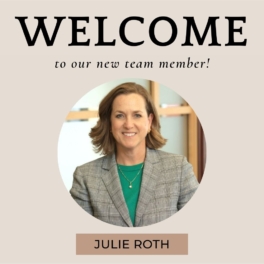

Building Business Value with Purpose
How to Align Growth with Exit Readiness for Stronger Outcomes
For most business owners, the company they built is more than a source of income. It reflects years of effort, vision, and values, and often serves as a cornerstone of their personal identity. Furthermore, over time, their initial small business may have grown into a larger enterprise, one that supports not only the owner and customers, but also employees and communities. All of this makes the eventual transition of the business more complicated; and unfortunately, when it comes time to consider what’s next – whether that is continued growth, a sale, a transition to family or employees, or even closure – the process is frequently very disappointing for everyone involved. Often, this is because these conversations come too late, the urgency and stress only allow for focusing on the transition tactics, and the meaning and impact get ignored.
Planning with the End in Mind
In contrast, strategizing about the eventual transition early on affords the time and space to create the desired legacy. Fortunately, the same steps that make a business easier to transition also make it more profitable, better organized, and more rewarding to own in the meantime. In short, managing with a mindset toward long-term transition and value is simply good business practice.
Three Pillars of Strong Business Stewardship
The key to managing with this mindset is aligning the three pillars below:
- Business Goals: Clear, actionable objectives that drive growth and efficiency.
- Personal Vision: Understanding what the owner wants life to look like during and after their time in the business.
- Financial Readiness: A solid grasp of how the business supports long-term personal financial goals.
When these pillars are aligned, decision-making becomes clearer and trade-offs more manageable. Owners are better equipped to prioritize initiatives that support both near-term performance and long-term aspirations.
Implementation as a Discipline
Start by assessing the current state of the business and identifying where it may or may not be congruent with your three pillars. Then take focused action:
- Set Short-Term Priorities: Identify near-term improvements in both business operations and personal financial planning.
- Work in Focused Timeframes: Implement plans in structured intervals, such as 90-day periods, with specific, achievable goals.
- Re-evaluate Regularly: Periodically revisit big-picture questions: Are we building the business we want? Are we financially and operationally prepared for future transitions?
A Flexible Approach
Planning for the future doesn’t mean locking into one specific path. Circumstances change – personally, financially, and in the marketplace. Owners who revisit their plans regularly are better prepared to adapt. That adaptability is a key ingredient in preserving options and responding to both opportunities and risks.
Why This Approach Works
When owners approach their business with long-term transition and value in mind, the benefits compound:
- Increased profitability through more efficient operations.
- Enhanced ability to attract and retain talent.
- Greater clarity on how to exit when the time is right.
- Reduced stress due to alignment between personal and professional goals.
Moreover, this mindset supports stronger leadership. It encourages proactive planning, better decision-making, and ultimately helps build a business that is valuable not just in a financial sense, but in the legacy it creates.
How Advisors Can Help
Collaboration among advisors – financial, legal, tax, or strategic – plays a critical role in helping business owners execute this kind of intentional planning. These advisors will provide specialized expertise, and some will additionally serve a “core” advisory role: helping clarify goals, provide critical objectivity, ensure a streamlined process, and help build the right team of additional resources.
A Better Way to Grow
The message is simple: plan early, plan intentionally, and revisit often. Whether your future includes passing the business to family, selling to a third party, or continuing to grow indefinitely, the same principles apply. Take stock of your goals, organize your efforts, and make value-building an ongoing priority.
Good planning won’t just help you exit well, it will help you run a better business now.





